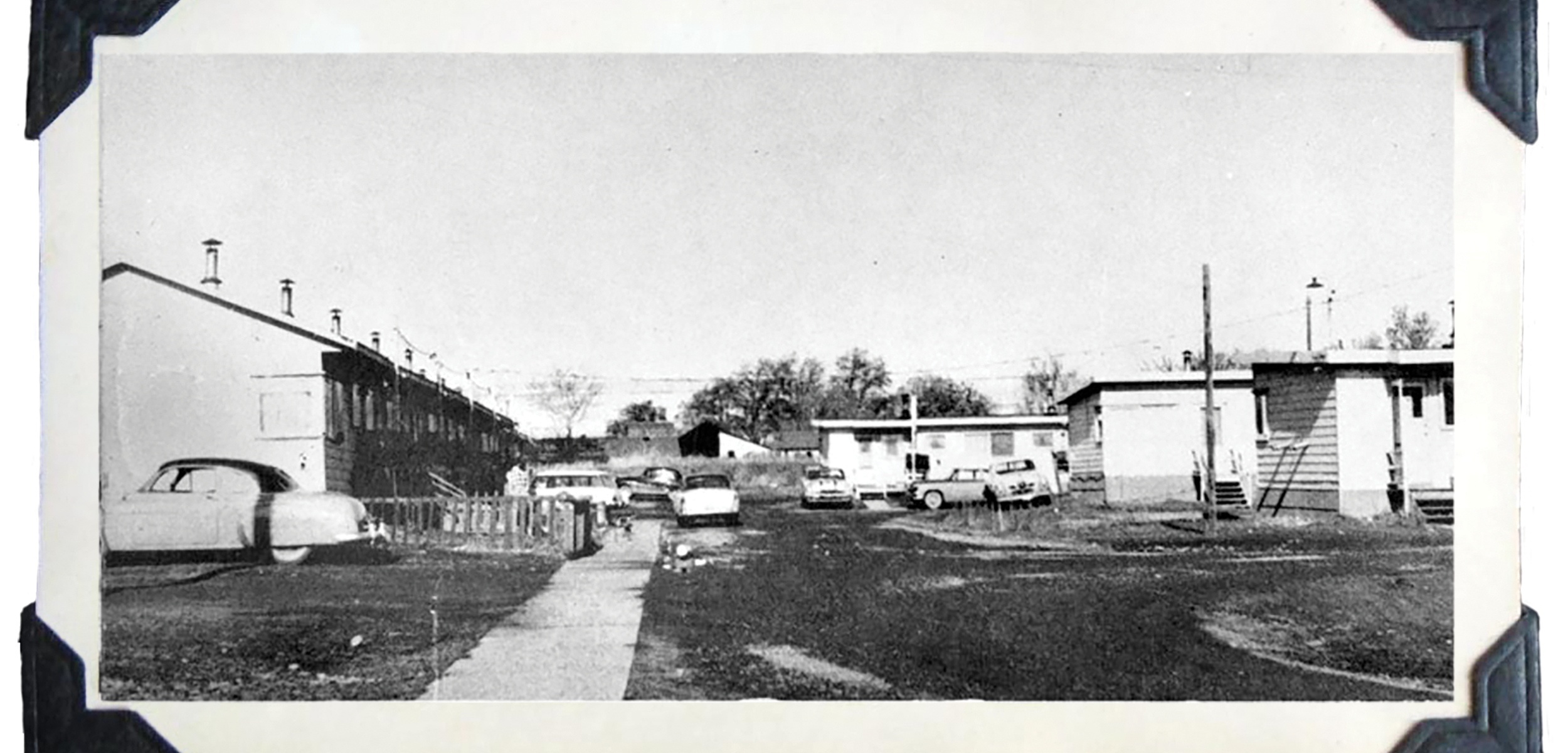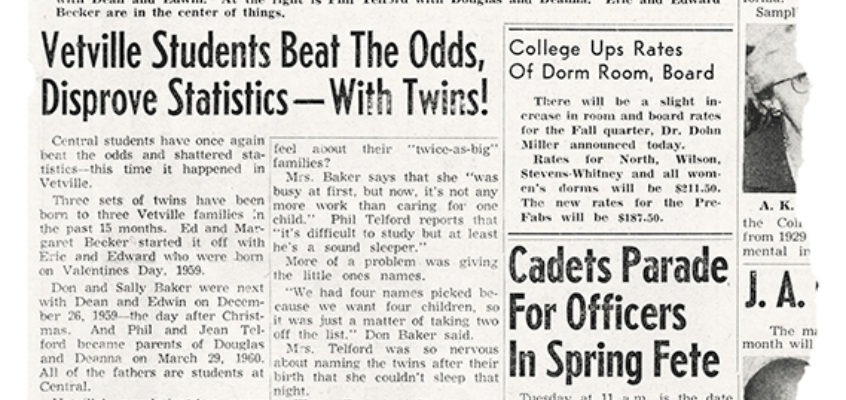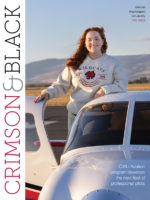
In post-World War II America, few pieces of legislation had as much impact on college campuses—including CWU (then known as Central Washington College of Education)—as the Servicemen’s Readjustment Act of 1944, commonly called the “GI Bill®.”
The bill provided a host of benefits to returning WWII veterans, including paying most of the expenses for a college education. Almost as soon as the war ended, veterans began matriculating back into civilian life, many taking advantage of their new educational benefits.
At Central, the number of veterans jumped from 13 in the fall of 1945 to 119 in the winter quarter. Nationally, some 7.8 million veterans took advantage of the bill and enrolled in college between 1944 and 1956 (when the original Readjustment Act expired).
To provide some context: Central’s regular student enrollment number during the 1943-44 academic year was 268 students. The following year, it crept up to 303 and to 372 during the 1945-46 year. But in 1946-47, when the war finally ended and the Readjustment Act was in full swing, the school’s total enrollment, including the new veterans, exploded to 918, then jumped to 1,125 in 1947-48, 1,307 in 1948-49, and 1,558 in 1949-50.
The man who had to address this sudden student boom was President Robert E. McConnell, who quickly recognized that the veterans coming to campus also had different needs than the typical Central student.
“The veteran students were quite different from the students Central had known before [the war],” noted historian Samuel R. Mohler, author of The First Seventy-Five Years, A History of Central Washington State College, published in 1967. “They were more mature in many respects and somewhat impatient with the idiosyncrasies of the recent high school graduates.”
Mohler continued: “Many who had attended CWCE previously were more serious students than they had been before, and some who had been casual ‘college Joes’ in the careless pre-war days now turned in amazingly good work.”
Another difference was that many were married and had children, which, Mohler noted, put even more pressure on the local housing market.
McConnell’s solution? Acquire surplus Army barracks from the former Moses Lake Air Force Base and transport them to Ellensburg, where they could be repurposed as housing for veterans and their families. In short order, a complex of some 50 units was assembled at the north end of campus and a community known as Vetville was born.
Patrick Devlin, who retired in 2018 after working in the Facilities Management Division for more than three decades and grew up in Ellensburg, said the former barracks were on Walnut Mall (formerly Walnut Street), east of the L & L Building and north of the Ganges ditch.
He recalled that the university bought the barracks for $1 and had them “cut up and brought here to Central” in sections, where they were reassembled for veterans’ housing.
Devlin said returning veterans also sometimes lived in the original Kennedy Hall (now the International Building) and in a two-story barracks structure across Walnut Mall from North Hall. That building, demolished in the late 1980s, was previously located at Bowers Field, where it housed soldiers training at the airfield during WWII. Later, the structure became known as the Paleontology Building.
Bell Hawk, editor of Central Remembered: A Collection of Memories and Anecdotes, compiled in 1992 for the university’s centennial, noted, “Commencing with the first influx of veterans, housing became critical. Pre-fabricated government surplus buildings located at the Ellensburg Airport were first utilized. Very soon, purchased units were placed on land acquired north of the college (beyond the existing Milwaukee Railroad tracks).
“These four barrack-like modules, devoid of amenities and surrounded by mud in wet weather, became temporary dormitories occupied predominately by veterans, and not infrequently, married and with young children,” he continued. “Most appropriately, the area was promptly dubbed ‘Vetville.’”
Alma McConnell, wife of President McConnell, recalled in a 1991 interview that “it was the only thing we could do for the money; we had to have them quickly.”
Since Vetville’s barracks were not constructed for longevity or luxury, improvements were made over the years. Responding to complaints about the draftiness of the facilities, President McConnell authorized the installation of insulating materials in February 1957.
Two years later, the April 24, 1959, Campus Crier student newspaper described a “Fix-Up Campaign” to clean and paint the buildings. The article noted that Vetville had 62 children at that time, so there were ongoing discussions of having a fence around the complex, which was erected by the end of the year.
“Many misconceptions have arisen about Vetville in the last few years concerning its livability and desirability,” the newspaper noted. “Each of the units is comfortably furnished … the desirability of Vetville has been shown by the hundreds of requests for unit housing.”
During the decade and a half that it existed, Vetville established itself as a distinct campus community. For many years, the Crier included a weekly “Vetville News” column containing tidbits about visitors to the complex (“Mr. and Mrs. Hollis Sweeney had as their guests last Sunday Mr. and Mrs. Litzenburg and two sons, and Mr. and Mrs. Darrel Hadley of Yakima.”).
Additionally, the paper routinely listed the results of Vetville-based intramural teams and noted the births of any children to Vetville couples (“Vetville Students Beat The Odds, Disprove Statistics—With Twins!” noted a headline in the May 27, 1960, Campus Crier).
Vetville residents also had an elected mayor, who served as a liaison with university administration, as well as elected representatives to the Honor Council and the Student Government Association.
As for changes brought by the veterans themselves to the university, Sidnie Davies Mundy, emeritus professor of English at Central, wrote in Central Remembered that when she was offered a position at Central in 1946, “this new class of students was glad to be in college, something many in their ranks had never thought they would have the opportunity to do.”
According to Bell Hawk, “Veterans proved to be mature, serious students of academic superiority, shunning traditional collegiate frivolities, intent on gaining their education and getting on with their lives and careers.”
Mohler echoed those sentiments, adding, “in general, they were so glad to be out of the service and in college that they made the readjustment remarkably well. Many of them had never thought of going to college before but were delighted with what they found there.”
Not surprisingly, Vetville residents boasted some of the highest grade-point averages among the various student groups, according to news accounts of the time.
Vetville was never intended to be a permanent addition to the campus, however. In the early 1960s, construction of the Short-Getz Married Student Apartments and the Wahle Married Student Apartments, spelled the end of the old barracks, which were demolished in 1962.
Looking back on Vetville, Alma McConnell recalled, “They weren’t fancy, but they [the students] had a good time.”
They certainly did.







comments powered by Disqus